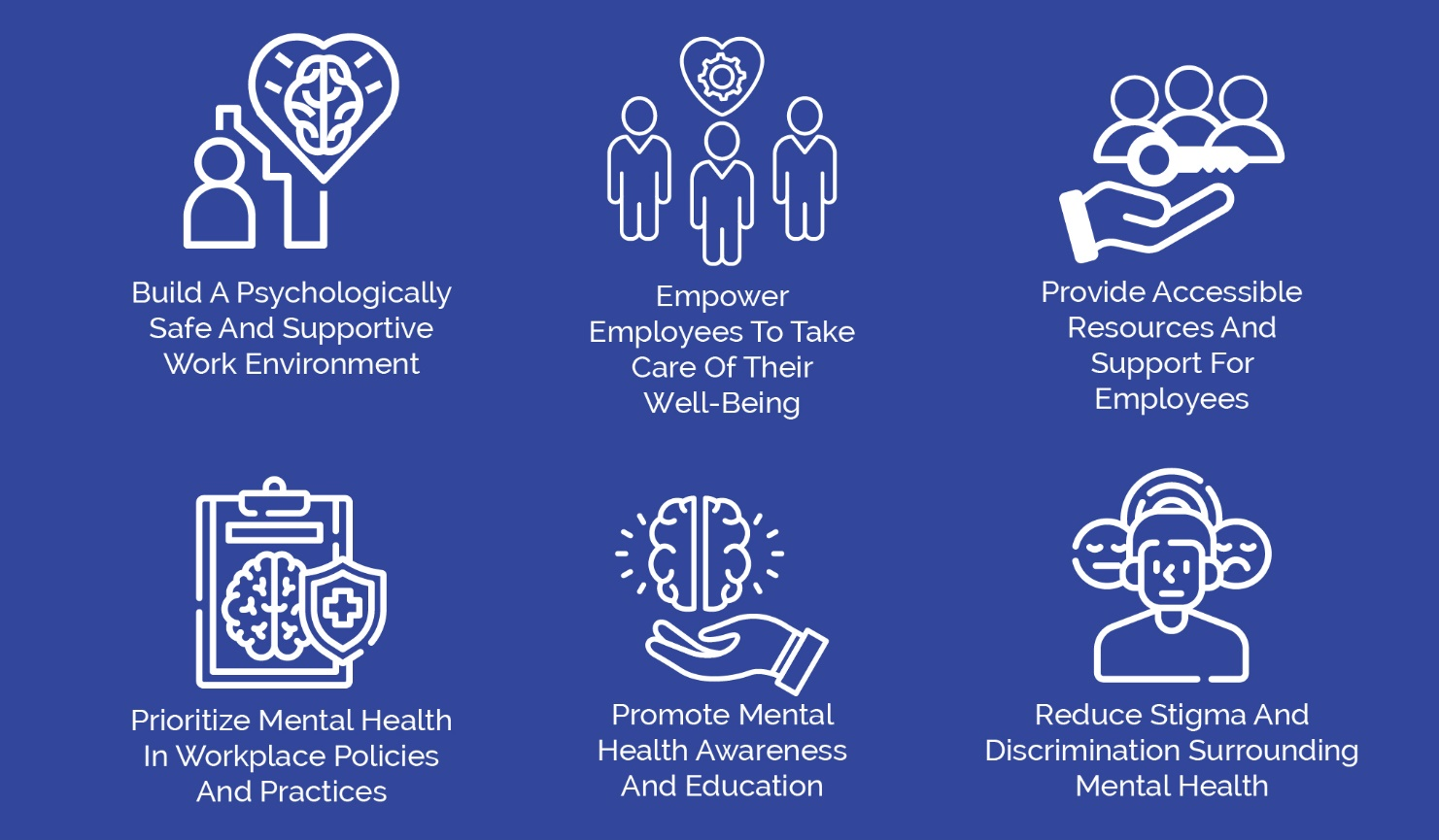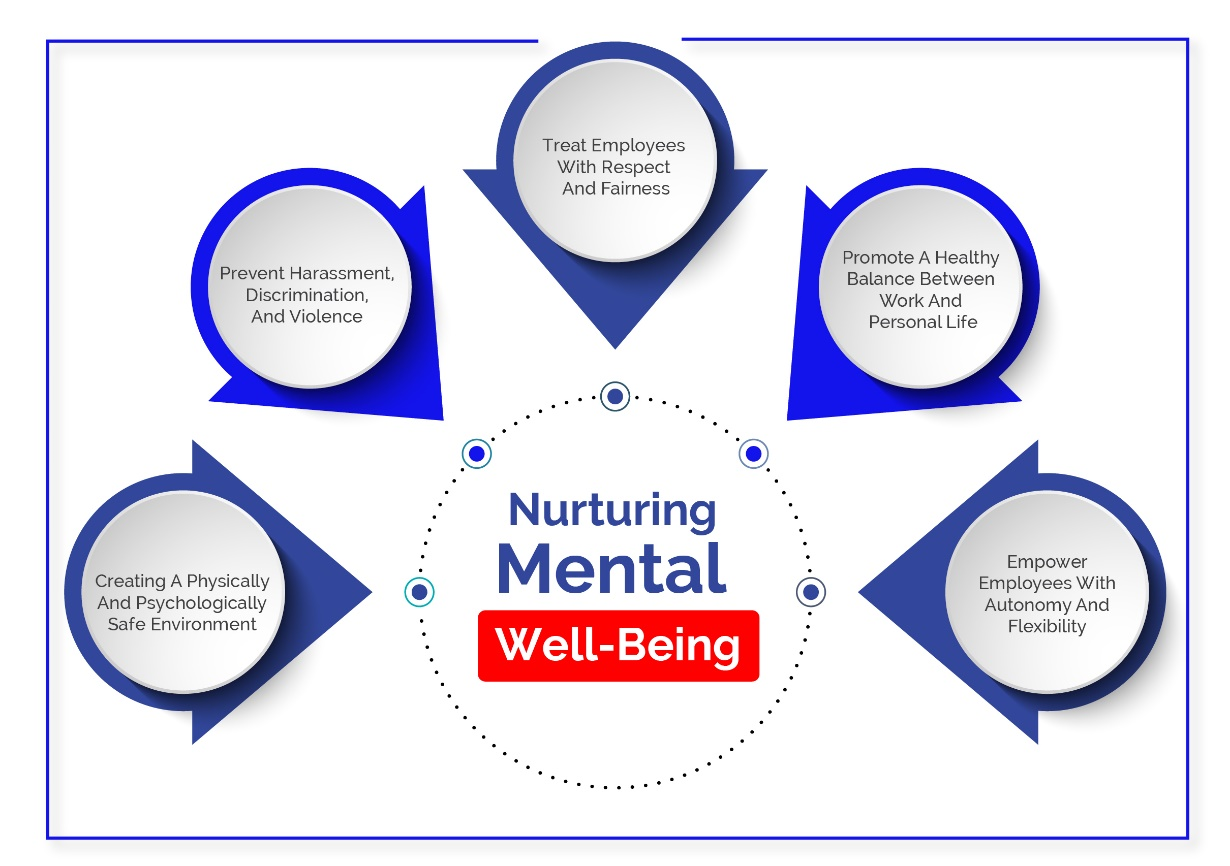In recent years, the conversation around mental health has become a central topic in workplace conversations. Employers and employees are beginning to understand that mental well-being is just as critical as physical health when it comes to maintaining a safe and productive work environment.
While traditional safety training, such as first aid training courses, advanced first aid courses, and fall protection training, focuses on preventing physical injuries, the importance of addressing mental health is increasingly recognized. Mental health issues can significantly impact workplace safety, leading to accidents, injuries, and even long-term disabilities if left unaddressed.
This blog explores how mental health affects workplace safety and provides strategies for recognizing and addressing psychological risks to create a safer work environment. By understanding the link between mental health and workplace safety, employers can take proactive steps to support their employees’ well-being, ultimately fostering a culture of safety and care.
The Link Between Mental Health and Workplace Safety:
Mental health is intricately connected to workplace safety. When employees struggle with mental health issues such as stress, anxiety, depression, or burnout, their ability to focus and perform tasks safely can be severely compromised. This not only puts the affected employee at risk but also endangers their colleagues.
For instance, an employee experiencing high levels of stress may become easily distracted, leading to mistakes during tasks that require full attention, such as operating machinery or performing confined space training. Similarly, someone battling depression may have decreased energy levels and may not be as vigilant in following safety protocols. The lack of focus and attention caused by mental health issues can lead to increased incidents of workplace accidents and injuries.
In addition, the stigma associated with mental health can prevent employees from seeking help, further exacerbating the problem. Fear of judgment or repercussions may lead individuals to hide their struggles, which can create a dangerous situation where psychological risks go unnoticed and unaddressed. Recognizing the signs of mental health issues and fostering an environment where employees feel comfortable discussing their mental well-being is crucial for workplace safety.
Recognizing Psychological Risks in the Workplace:
Identifying psychological risks in the workplace is the first step in mitigating their impact on safety. Employers must be vigilant in recognizing the signs of mental health struggles among their employees. This can be challenging, as mental health issues are not always visible and can manifest in various ways.
Some common signs that an employee may be struggling with mental health issues include frequent absenteeism, changes in behavior or mood, decreased productivity, and an increased number of mistakes or accidents on the job.
For example, an employee who was once highly engaged and productive but suddenly becomes withdrawn and less focused may be dealing with underlying stress or anxiety. Similarly, an individual who is typically careful and methodical but begins making uncharacteristic errors might be struggling with burnout or depression.
Employers can also assess psychological risks by conducting surveys or interviews to gauge employee satisfaction, stress levels, and overall mental well-being. These assessments can provide valuable insights into the mental health climate of the workplace and highlight areas that need improvement.

Nurturing mental well-being is essential for creating a safer and more productive work environment.
Addressing Psychological Risks Through Training and Support:
Once psychological risks have been identified, it is essential to address them proactively to ensure workplace safety. Training and support are key components of this approach. While basic first aid training and intermediate first aid courses are vital for managing physical health emergencies, integrating mental health training into the workplace can help employees and managers recognize and respond to psychological risks effectively.
Mental health training should cover topics such as identifying signs of mental distress, understanding the impact of mental health on workplace safety, and learning how to support colleagues who may be struggling. This training should be part of a broader safety program that includes first aid training courses and fall protection training, ensuring that both physical and mental health are prioritized equally.
In addition to training, providing access to mental health resources is crucial. This can include Employee Assistance Programs (EAPs), counseling services, and mental health days. Employers should encourage employees to take advantage of these resources without fear of stigma or negative consequences. Creating an open and supportive environment where mental health is discussed openly can help reduce the stigma and encourage employees to seek help when needed.
The Role of Management in Promoting Mental Health and Safety:
Management plays a critical role in promoting mental health and safety in the workplace. Leaders must set the tone by prioritizing mental well-being and demonstrating a commitment to supporting their employees’ mental health. This can be achieved through several strategies.
First, management should lead by example. By openly discussing mental health, taking breaks, and utilizing mental health resources themselves, leaders can model healthy behavior for their employees. This helps to normalize conversations about mental health and encourages others to prioritize their well-being.
Second, managers should receive training on how to recognize and respond to mental health issues in the workplace. This training should be part of a comprehensive safety program that includes confined space training and advanced first aid courses. Managers need to understand the impact of mental health on workplace safety and be equipped with the tools to support their team members effectively.
Finally, creating a culture of openness and support is essential. Managers should regularly check in with their employees, asking about their workload, stress levels, and overall well-being. These check-ins should be conducted in a non-judgmental and supportive manner, ensuring that employees feel comfortable sharing their concerns. By fostering a culture of care, managers can help prevent mental health issues from escalating and affecting workplace safety.

Addressing mental well-being in the workplace is key to enhancing overall safety and performance.
Creating a Supportive Work Environment:
Creating a supportive work environment is crucial for promoting mental health and safety. This involves more than just offering training courses and resources; it requires a holistic approach that considers the overall work culture and environment.
One way to create a supportive work environment is by promoting work-life balance. Encouraging employees to take breaks, set boundaries, and prioritize self-care can help prevent burnout and reduce stress levels. Additionally, offering flexible work arrangements, such as remote work or flexible hours, can help employees manage their mental health more effectively.
Another important aspect of creating a supportive work environment is recognizing and addressing workplace stressors. High workloads, unrealistic deadlines, and lack of support can all contribute to mental health issues. Employers should regularly assess the work environment and make necessary adjustments to reduce stress and create a more positive and supportive atmosphere.
The Importance of Ongoing Support and Evaluation:
Supporting mental health in the workplace is not a one-time effort; it requires ongoing attention and evaluation. Employers should regularly assess the effectiveness of their mental health initiatives and make adjustments as needed. This includes reviewing the outcomes of mental health training, assessing employee satisfaction, and monitoring workplace safety incidents related to mental health.
Employers should also seek feedback from employees on their mental health needs and concerns. This feedback can provide valuable insights into how to improve mental health support and create a safer work environment. Additionally, employers should stay informed about best practices in mental health and safety and be open to adopting new strategies and approaches.
The impact of mental health on workplace safety cannot be overstated. When employees are struggling with mental health issues, their ability to work safely and effectively can be compromised, leading to accidents, injuries, and long-term consequences. Recognizing and addressing psychological risks is essential for creating a safe and supportive work environment.
Employers can take proactive steps to promote mental health and safety by offering training, resources, and support. Integrating mental health training into safety program scan help employees recognize and respond to psychological risks effectively. Additionally, management plays a critical role in setting the tone for mental health and safety by leading by example and creating a culture of openness and support.
At Metro Safety Training, we understand the importance of mental health in the workplace. We offer comprehensive safety training programs, including first aid training courses, advanced first aid courses, fall protection training, and confined space training, designed to help employers create safer and healthier work environments.
Contact us today to learn more about how we can support your workplace safety initiatives in Vancouver and Surrey.








